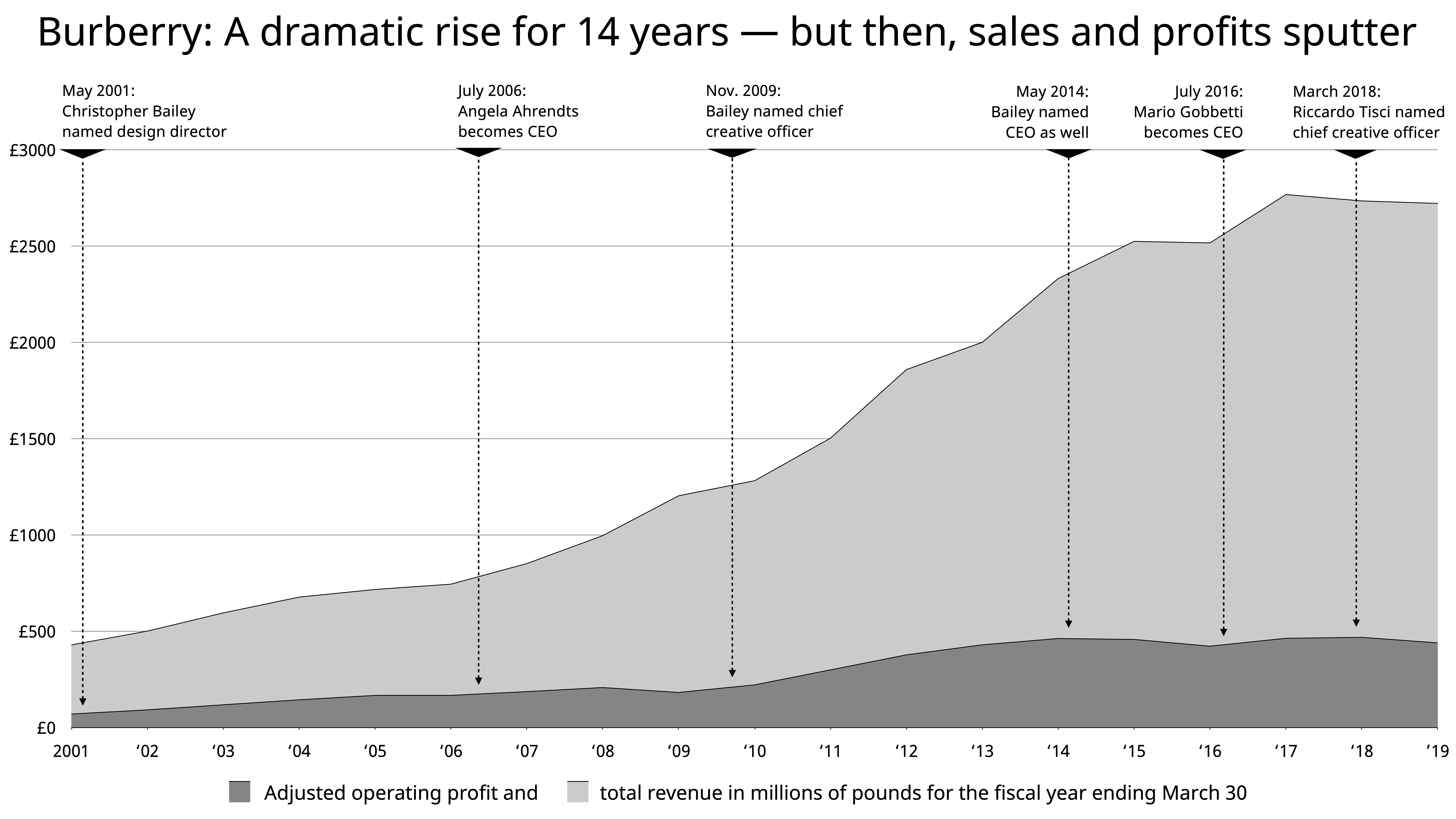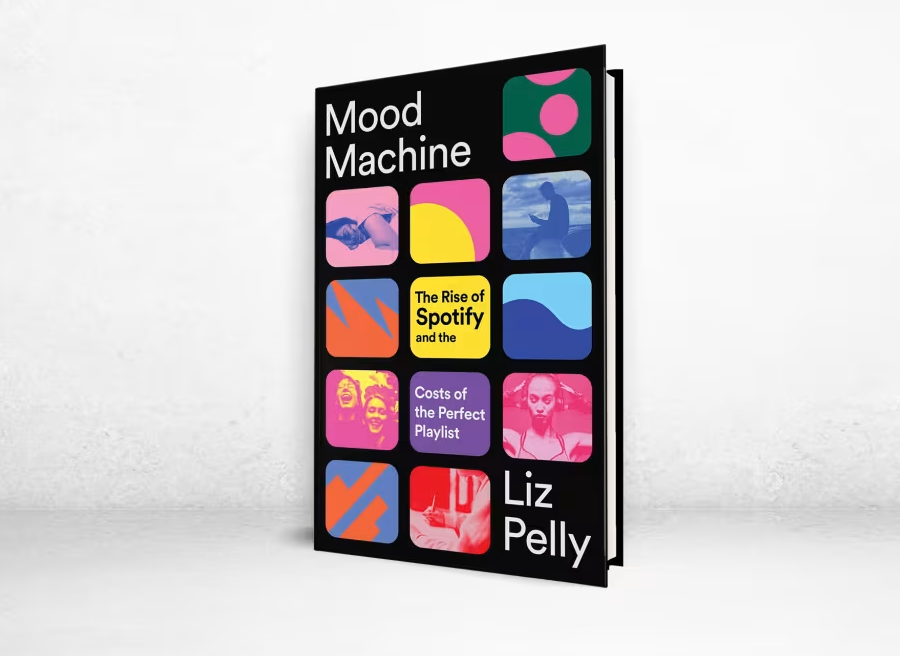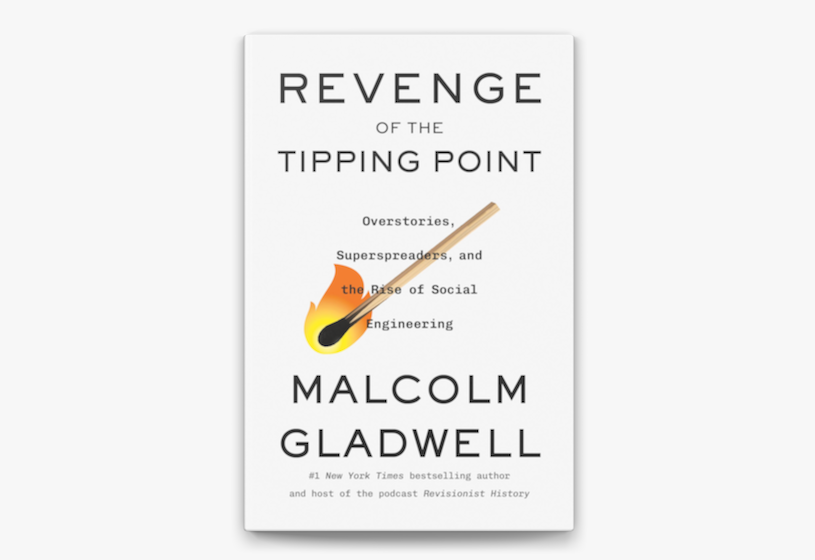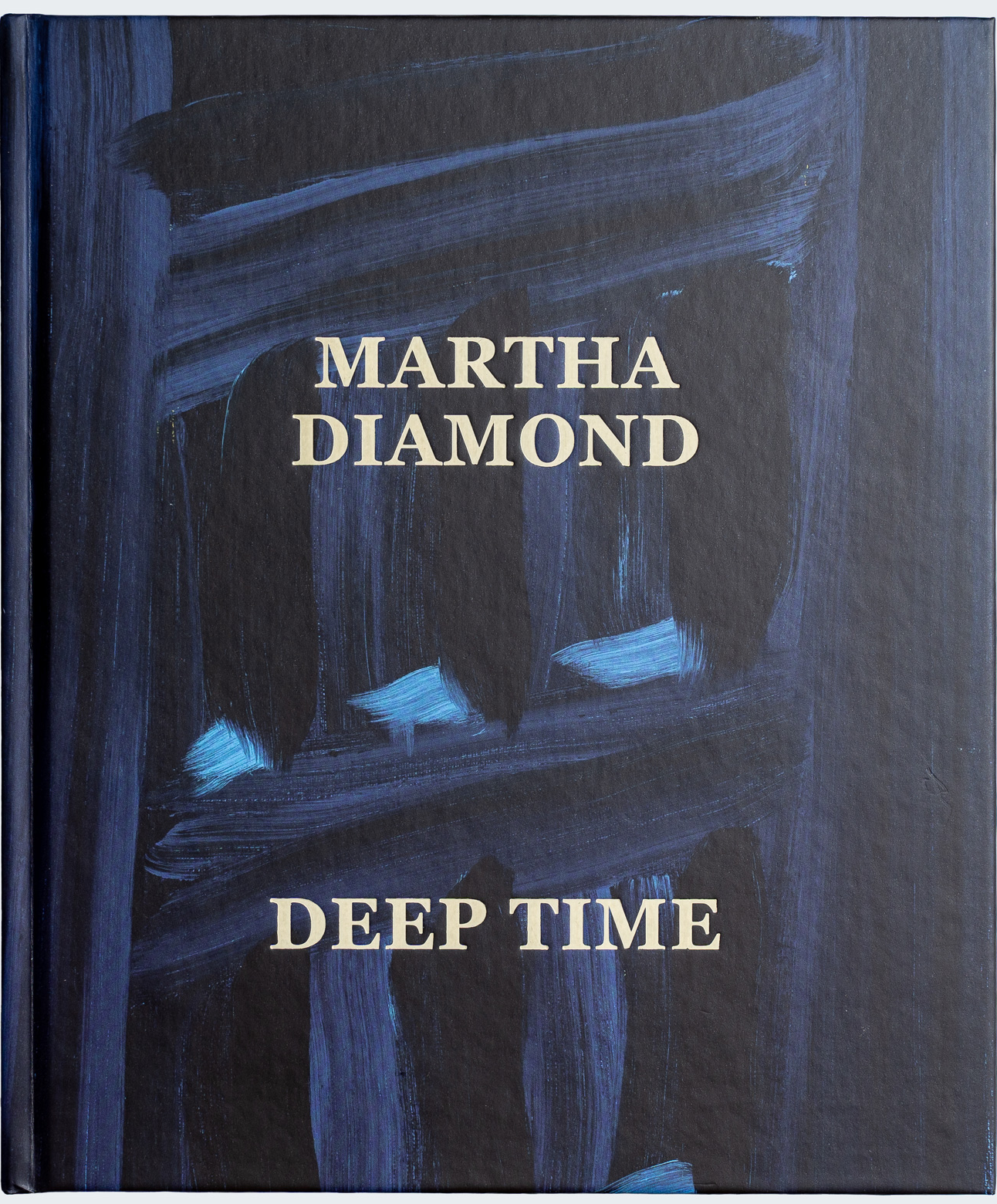“Frank Rose’s latest book, The Sea We Swim In: How Stories Work in a Data-Driven World, explains the power of narrative in influencing how we think — and work and consume. . . . Frank describes a potent cultural phenomenon driving markets that builds on insights from neuroscience, psychology and economics. Here, he introduces the idea of the narrative platform and illustrates the outsized impact of the stories it can hold with the blossoming of Warby Parker, the online eyeglasses store, and the rebirth of Burberry, inventor of the gabardine trench coat. An education in how (and how rapidly) marketing is changing? Sure. But also a lot of fun to read.” —Peter Passell, editor-in-chief of the Milken Institute Review.
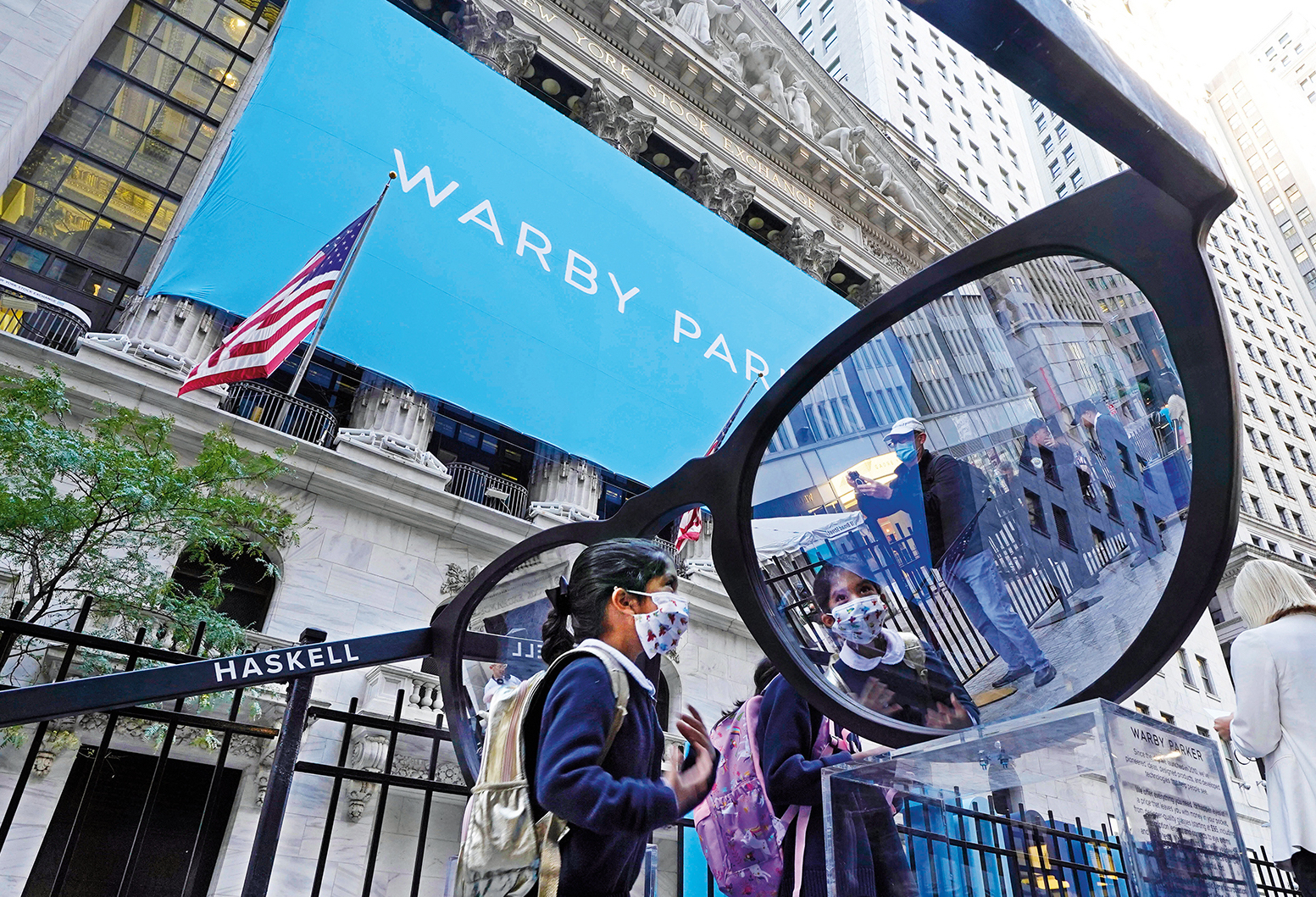
September 29, 2021: Warby Parker goes public on the New York Stock Exchange. The stock was up 36% on its first day of trading. AP photo/Richard Drew
EVERYBODY, IT SEEMS, wants to be in the platform business these days. And why not? It’s a lot cheaper to run an exchange that connects drivers and riders, say, or hosts and guests than it is to amass a fleet of taxis or a string of hotel rooms. Before the coronavirus upended the entire travel industry, Airbnb had some seven million listings in 100,000 cities around the world — and managed it all with fewer than 13,500 employees, or one for every 520 listings. And though its business has been up and down since, at least it doesn’t have to worry about supply-chain issues.
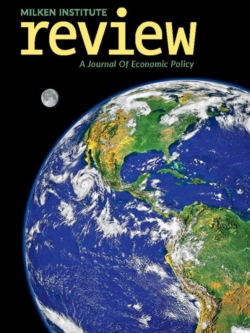 But that’s just the start of it. There’s also the benefit from “network effects”: the more users such businesses have, the more valuable they become both to the people using them and the people who own them. In 2009, WhatsApp offered the ability to send free text messages to other people — as long as they were WhatsApp users, too. Within five years, WhatsApp had 470 million users per month and was bought by Facebook for $19 billion.
But that’s just the start of it. There’s also the benefit from “network effects”: the more users such businesses have, the more valuable they become both to the people using them and the people who own them. In 2009, WhatsApp offered the ability to send free text messages to other people — as long as they were WhatsApp users, too. Within five years, WhatsApp had 470 million users per month and was bought by Facebook for $19 billion.
Another intriguing fact about WhatsApp: It had 600 million users per month — but still only about 70 employees — by the time the Facebook deal closed. That works out to about 8,600 users per employee, which is so few as to make Airbnb look like some sort of full employment scheme. This points to a third advantage that platforms enjoy: vast economies of scale. Not only is it cheaper and less risky to run an exchange than it is to make products and then try to sell them; as more and more users join the platform, the cost of serving each one goes down.
And then there’s the fourth advantage: platform owners collect the data that comes from having a direct relationship with customers. Taxi companies respond to random pickup requests; Uber and Lyft know where you live.
Google, Amazon, Apple, Facebook, Microsoft — platform business models have been central to the digital disruption of the past 20 years.
As these examples suggest, platform business models have been central to the digital disruption of the past 20 years. Google, Amazon, Apple, Facebook, Microsoft — each runs what’s known as a two-sided or multi-sided platform, meaning they create a market that connects two or more types of people. Early on, David Evans of the University of Chicago and Richard Schmalensee of MIT’s Sloan School of Management identified four broad categories of platforms, each of which brings together different groups of people for their mutual benefit:
• Exchanges link buyers and sellers — eBay, Airbnb, Uber, Lyft. Such businesses aren’t exactly digitally native: stock exchanges date to the 17th century, and literary agencies, real estate agencies and insurance brokerages weren’t invented yesterday, either.
• Advertising platforms bring together advertisers and audiences: television networks, newspapers, magazines, social media sites.
• Transaction platforms connect merchants, consumers and banks: Visa, Mastercard, PayPal, Apple Pay.
• Technology platforms establish software and hardware standards for others to follow. This rarely happens without a fight: Sony’s Blu-ray versus Toshiba’s HD-DVD for highdefinition DVDs, Sony’s PlayStation versus Microsoft’s Xbox for video games, Apple’s macOS versus Microsoft’s Windows for personal computers. Sometimes competing platforms manage to coexist; other times, only one will survive. The winner-take-all effect is particularly acute when the differentiation between two standards is low and the cost of switching is high. With high-definition DVD players, for instance, one worked about as well as the other, so it came down to which system came out of the box with the most movies, TV shows and video games. Sony owned a major Hollywood studio and was able to bundle Blu-ray with its PlayStation video game console — so it was game-over for Toshiba.
Now a fifth type of platform is emerging. Narrative platforms support a sprawling ecosystem of stories; they also function as exchanges of sorts, bringing people together in a marketplace of ideas and information. And while the benefits of a platform for telling stories might appear to be restricted to media companies — television networks, movie studios and the like — every organization is potentially a media company in the digital age. What matters is not so much the means of production as the means of communication, and everyone has access to communications technologies today.
Now a fifth type of platform is emerging. Narrative platforms support a sprawling ecosystem of stories, bringing people together in a marketplace of ideas and information.
A particularly interesting characteristic of platforms is that they can be built on top of one another. Google is built on top of the web, as are Amazon and Twitter and most of the other digital platforms we interact with daily. Technologically, narrative platforms are rarely a single operation like Apple’s App Store, but rather an ad-hoc construct that straddles multiple existing platforms: Twitter, Facebook, YouTube, video game consoles, live-action events, a television channel if it’s built around an entertainment offering, or retail shops if they’re constructed for physical products.
Together, these parts form a whole that expands the story well beyond its original dimensions. They also expand the definition of a platform. If a single-sided platform connects people with a brand, and a multi-sided platform connects different groups of people with one another, a narrative platform does both — it connects people with the story and with one another.
This means that narrative platforms differ in a crucial way from the classic platform business model as described by economists earlier. These are not multi-sided markets, at least not technically speaking. The definition can be quite strict: Evans and Schmalensee cite the example of a heterosexual singles club that “needs to get two groups of customers on board its platform” — men and women — but it seems not to have occurred to them that gay bars function the same way, except that the two groups are one.
This dynamic — like seeking like — is characteristic of narrative platforms as well. They are not just a single-sided market, nor are they multi-sided, connecting different groups to one another. Narrative platforms are something else: they are self-seeking markets. A place for like-minded people to interact with other like-minded people — people who are there to connect with the story, yes, but also to connect with each other about the story. The platform links everyone who wants to join in. It disseminates the narrative. It encourages us to immerse ourselves. It’s how we tell ourselves a story in the digital age.
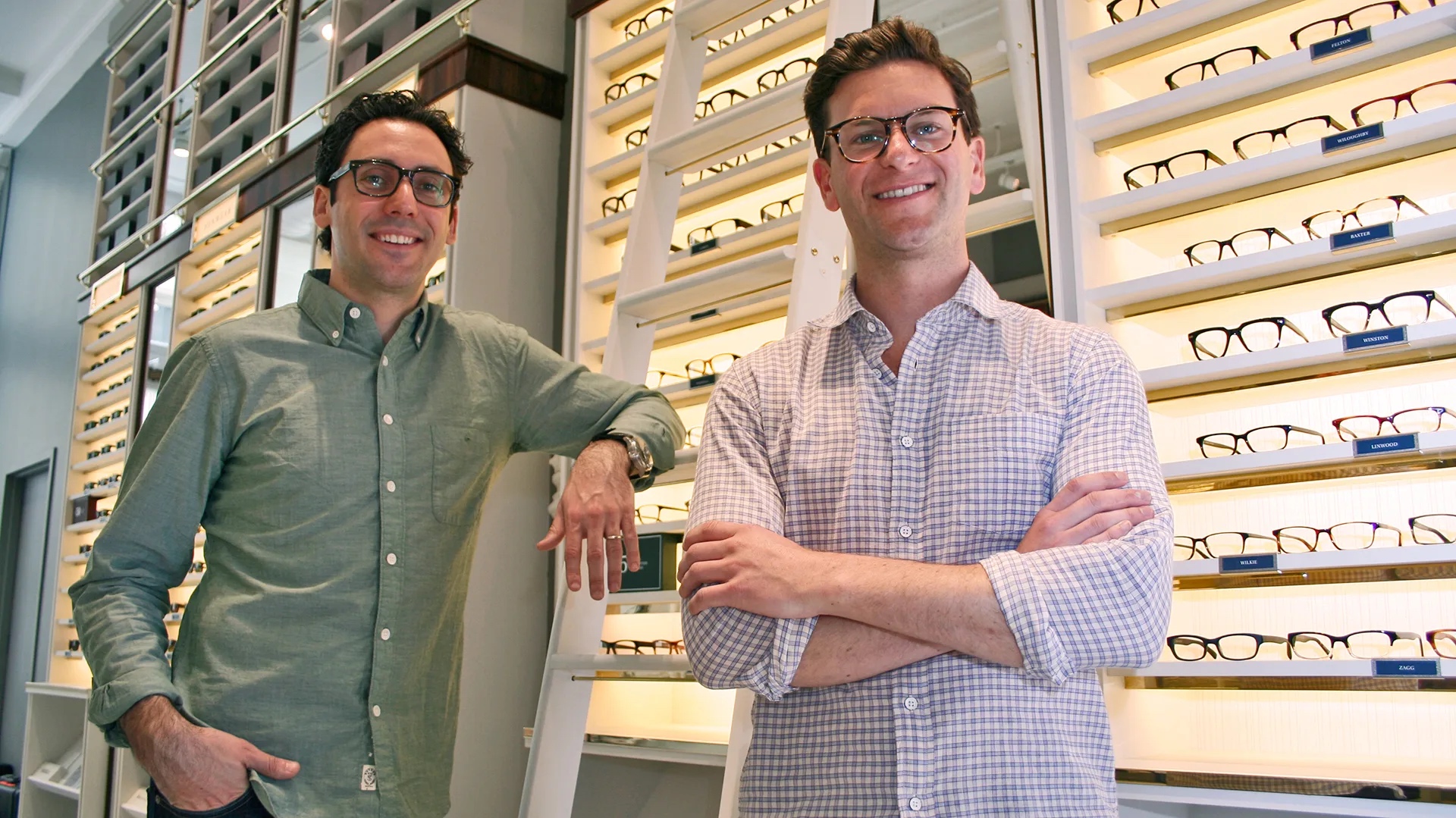
Neil Blumenthal and Dave Gilboa, co-CEOs of Warby Parker, opened their first store in 2013 in Lower Manhattan. Photo: Fast Company
The Netflix of Eyewear
Consider Warby Parker, the outfit that was set up in 2010 to sell eyeglasses online. When Warby Parker was launched, selling eye-glasses on the web seemed a dubious proposition. Who would buy glasses without being able to try them on?
The four founders, all MBA candidates at Wharton, had gotten the idea a year and a half earlier after one of them — a hiking enthusiast named Dave Gilboa — got off an airplane in Thailand and realized too late that he’d left his $700 pair of Prada glasses behind. He couldn’t afford to replace them, and he also couldn’t believe he’d blown all that money on them. When he mentioned this to a classmate — Neil Blumenthal, who’d spent five years running a nonprofit called VisionSpring that helps people in poor countries get glasses — an idea was born.
Blumenthal shared the idea with a couple of other friends, Jeff Raider — who was wearing a $500 pair of designer glasses held together by duct tape — and Andrew Hunt. The four guys spent months researching the field, trying to establish a clear idea of what they wanted to do. But before they’d even put together a website, they got word that GQ was planning to feature them in its March 2010 issue. It was a small mention — just a single paragraph in the middle of a long photo story about eyeglasses that featured such notables as Andy Warhol, Yves St. Laurent, David Hockney and James Dean. But it did say that Warby Parker would ship you five pair of glasses to try on at no charge, let you mail them all back for free and then send you the pair you’d picked out with prescription lenses included for $95. Best of all was the heading: “The Netflix of Eyewear.”
The Warby Parker website went live on February 15, the same day the magazine hit the newsstands; within 24 hours the four were so swamped with orders they had to suspend the home try-on offer. Some would-be customers asked if they could come by the office to try on glasses, not realizing that there was no office. So they came to Blumenthal’s apartment, or sometimes Raider’s, and looked at options laid out on the dining table. Since the guys hadn’t thought to put a soldout button on the website, they soon had a backlog of 20,000 orders. As they worked their way through that, they realized they’d sold as many glasses in three weeks as they had expected to sell in their first year.
What Warby Parker did on its website and in the media coverage that followed its hasty debut was tell a story about itself. A key part of that story involved the competition. When the four partners were planning their business, they found out why eyeglasses are so expensive: a single company controls almost the entire industry. That company is Luxottica, an Italian outfit that owns Ray-Ban and Oakley, licenses designer brands ranging from Armani to Burberry to Prada to Versace, owns major retail chains like LensCrafters and Sunglass Hut and even controls EyeMed, the second-largest eye care insurer in the United States.
With a dominant position in the market, Luxottica can charge whatever it wants — which, according to the Los Angeles Times, can mean a markup of as much as 1,000 percent. By selling its eyeglasses online, Warby Parker was able to bypass Luxottica-controlled retail networks, sell glasses for a fraction of Luxottica’s inflated prices and establish a direct relationship with its own customers in the process. So Warby became the saga of four guys who took on a retail octopus and sold fashionable if slightly nerdy-looking glasses at the certifiably crazy price of 95 bucks.
This was a story that had Warby’s glasses flying off the shelves before the shelves were even built. A key part of this story was why — why they were doing this. In a TED talk he gave in 2009 — one of the most-watched TED talks ever, as it happens — Simon Sinek, author of the book Start with Why, observed that “people don’t buy what you do; people buy why you do it.” Selling what you do makes you one among many. Selling why you do it (assuming you know) makes you unique.
It’s how Steve Jobs rebuilt Apple from the wreckage left by the professional managers who’d all but destroyed it in the 1990s: he wanted people to “think different.” And it’s how Gilboa, Blumenthal, Hunt and Raider built Warby Parker. They didn’t want to pay hundreds of dollars for eyeglasses, and they decided to do something about it.
Warby Parker’s Class Trip enabled the folks back at headquarters to supplement the customer data they’d collected online with detailed impressions of actual individuals who liked their products.
That was the start of it. What further established Warby Parker, both as a brand and as a story, was the Warby Parker Class Trip. When they were getting started, Raider told me, the plan (if PR and word of mouth weren’t enough) was “to drive across the country ourselves, bring the glasses with us and host trunk shows across the country.” They even thought about buying an old school bus they’d found for sale for $10,000. As it turned out, that wasn’t necessary. But in 2012 they did it anyway on a somewhat grander scale, transforming an old yellow school bus into a rolling eyewear boutique and sending it across America. What Ken Kesey did for LSD in the 1960s, the scruffy little band of Warbyites on the Class Trip would do for eyeglasses.
So a guy from their customer experience team got a bus-driving permit and set off with four other people who were handling social media and sales. For months they rambled from city to city, meeting fans and blogging about anything they encountered that seemed artisanal and hipsterish: a quirky little clothing shop in Nashville, the best barbecue joint in Atlanta, a pie shop in Dallas, a San Francisco bookbinder that makes iPad cases, a leather-crafter in Portland, the indie music pioneer Sub Pop Records in Seattle, a bicycle shop in Denver. By September 2013, when they finally called it quits at Camp Wandawega, Wisconsin, they’d been on the road for nearly a year.
The Class Trip was brilliant in several ways. Compared with advertising, its cost was trivial. On a purely practical level, it enabled the folks back at headquarters in downtown Manhattan to supplement the customer data they’d been collecting online with detailed impressions of actual individuals who liked their products — to put faces to the numbers. It forged a bond with those people, cementing the cult-brand status that had been developing since launch, and it expanded this fan base by publishing stories on the blog. Nearly every photo they posted showed the Warbyites to be the mirror image of their customers. Facial hair? Check. Denim? Check. Food-obsessed? Check. All-natural everything? Check. They were cool, their fans were cool and so was their brand.
One final factor: though the fan interactions were heavily documented on the company blog and on Instagram, and therefore infinitely shareable, they happened in the real world. This put Warby on point with an emerging appreciation among Millennials, easily the most digitally savvy generation of adults at that time, for physical objects such as books and vinyl records. I had just designed an attitudinal survey about digital vs. physical with JWT Intelligence, the trend research unit of the J. Walter Thompson ad agency, which showed that British and American Millennials were more likely than older generations to express nostalgia for things like record players and film cameras, to say they’d miss printed business cards and mail-order catalogs if they disappeared, even to say they liked the smell and feel of books and magazines. The Class Trip resonated with that: it was about the smell and feel of life.

For the Warby Parker Class Trip, the company sent a tiny band of Warbyites across America in a converted schoolbus, meeting fans and blogging about their encounters.
Two Thousand Names to Choose From
One of the most effective stories to tell is the origin story. When the marketing agency Merkle teamed up to do a study with Levo, an online community for Millennial women, they found that nearly half of the women surveyed knew their favorite brand’s origin story and two out of five could name the founders.
The guys who started Warby Parker gave a remarkable amount of thought to who they were and what they wanted their startup to become — starting with its name. They came up with some 2,000 alternatives, which they mulled over for more than six months. The name they settled on was quirky — half-strange, half-familiar and memorable for that reason. Gilboa had seen a Jack Kerouac exhibit at the New York Public Library and started reading some of Kerouac’s journals on display. He came across a couple of characters with curious-sounding names, Warby Pepper and Zagg Parker. A decade later, new employees were given a copy of Kerouac’s Dharma Bums to maintain the connection.
Warby Parker defined itself early on as “a lifestyle brand offering value and service with a social mission” — a three-part identity statement that establishes a clear purpose as well as a straightforward hierarchy of goals. The social mission is its buy-a-pair/give-a-pair program: for every pair of glasses bought, Warby gives a pair to someone in need. Value and service are what the company promises its customers. And by identifying itself above all as a lifestyle brand, Warby is signaling that it wants to do more than sell a product — that it aspires to be part of people’s lives, even to help define their identity.
Books — and reading — are an important piece of this. Old books were lined up on wooden shelves on the school bus for the Class Trip. When Warby started opening retail stores in 2013, books from independent publishers like Brooklyn’s powerHouse Books and McSweeney’s were for sale there. Books are a good fit with Warby’s fashionably geeky style and with eyeglasses in general, plus they reinforce the real-world connection that the Class Trip made so pointedly.
The retail stores take that connection further. The first, in SoHo in lower Manhattan, has been joined by dozens of others, many of them in hip neighborhoods like Venice, California, and downtown Detroit. They proved phenomenally successful: by 2015, five years after the company’s launch, in-store sales were averaging $3,000 per square foot per year — a figure roughly equal to Tiffany’s and far above the retail average of $325. (Apple leads everyone with pre-pandemic sales of roughly $5,500 per square foot.)
Two things made the retail stores work: intensive data analysis to identify locations that would flourish, and a focus on creating a pleasing and shareable physical experience, with ample space for people to move around and full-length mirrors so they could try on glasses and post the results on Instagram. Even as brick-and-mortar retail seemed to be cratering, with department stores closing willy-nilly and shopping centers being repurposed as Amazon “fulfillment centers,” Warby’s shops were overtaking online to become the company’s leading source of sales.
Other aspects of Warby Parker’s identity are less obvious. Take the color blue, which can be found on its website, in its stores, in its packaging and lining the inside of its glasses cases. This is not just any blue: it’s blue-footed booby blue. The blue-footed booby is a marine bird found in the Galapagos Islands. The boobies have bright blue feet, and they’re known for a strange mating ritual in which the males lift their feet one by one and show them off to discerning females. The bluer the feet, the healthier the bird and the more likely to find a mating partner.
Blumenthal encountered the boobies on a trip to the Galapagos. He loved their look, which is as goofy as it is earnest. “It’s sophisticated, because it’s found in these far reaches of the globe, and part of the Warby Parker brand is being worldly and informed,” he told Fast Company. Boobies also tend to view the world with a quizzical expression, which fits because the brand is also about learning and being curious. But the most amazing thing, he went on, is those bright blue webbed feet, “which have a little bit of flair, a little bit of quirkiness. One of our core values here is to inject fun and quirkiness into everything that we do.”
Warby’s association with the blue-footed booby is a reminder that, subliminally or otherwise, every choice we make feeds into the story we’re trying to tell. It doesn’t matter if we’re a direct-to-consumer company or a nonprofit or a political organization. Our story isn’t just what we say it is, and it isn’t told only in words. It is the sum of everything we do.
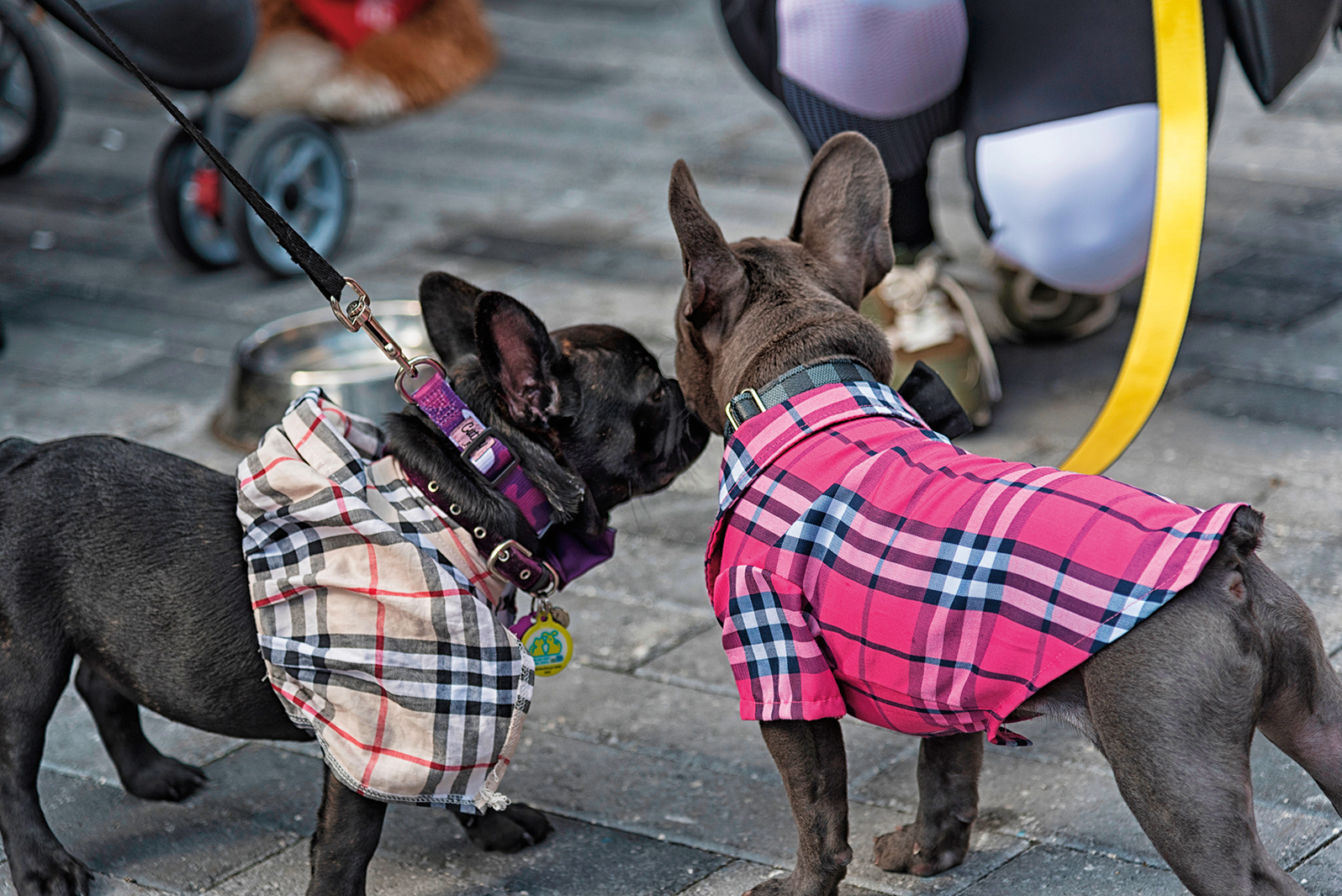
The Burberry check (doggie version). Photo: Rosanne de Vries/Shutterstock
The Story of Burberry
This realization was key to the revival of Burberry, which today is Britain’s leading fashion house. A 19th-century “heritage brand” long known for its classic trench coats and its signature check, Burberry had sunk low after 140 years. It had a fabulous story that was shrouded in cobwebs. Then, under a succession of strong chief executives and a brilliant creative director, it staged an astonishing recovery, its revenues rising tenfold and its profits close to twentyfold in a 14-year sprint. Authentic storytelling and a strong, multi-faceted narrative platform were key elements in its success.
When 30-year-old Christopher Bailey was named design director in 2001, it was a dubious honor. There were intimations of a turnaround, but no clear sense that it would last. The chief executive, Rose Marie Bravo, had been brought in from the U.S. to salvage the brand, but despite some progress it was still beset by cheap counterfeits and constrained by licensing deals outside the UK that gave away much of its profit. Bravo had decided to make the distinctive “Burberry check” as ubiquitous as Prada’s inverted triangle logo, splashing it on hats, luggage, bikinis, bandanas and even baby booties in vivid colors like pink and purple. But that tactic was backfiring. Intended for an upscale market, Burberry was instead becoming the uniform of choice for football hooligans and “chavs” — loutish, working-class youths with a taste for bling. It reached the point that pubs started banning people dressed in Burberry.
The nadir came in 2002, when Danniella Westbrook — an on-again/off-again actress on the BBC nighttime soap EastEnders who was so in thrall to cocaine it had eaten away her septum — was caught on the street in a paparazzi shot, “clad top to toe in Burberry check,” as The Guardian put it: “the hat, the skirt, the scarf, her baby dressed up to match, as if she had gorged herself upon it, rolled about in it like a pig in muck.” So much for “the much-heralded Burberry revival,” the paper concluded.
The only person who wasn’t appalled by this display, apparently, was Christopher Bailey, who came to her defense in an interview. “I felt very uncomfortable with all the media aggression towards this one person,” he said later. “But also, I am just not snobby. I grew up in a working-class family. I went to quite a tough school.”
Their stores were selling everything from kilts to dog leashes. “There’s nothing wrong with any of those products individually,” Ahrendts said, “but together they added up to just a lot of stuff.”
Given his class background, Bailey was hardly an obvious choice to help transform a failing English trench coat manufacturer into a full-fledged luxury brand. He’d grown up amid the failing coal mines and woolen mills of West Yorkshire, his father a carpenter, his mother a window dresser for the Marks & Spencer department store chain. “You didn’t aspire to do anything other than going into the army or working in a shop or factory,” he said. “You know that film Billy Elliot?” — about a coal miner’s son in the North of England who desperately wants to be a ballet dancer. “I strongly related to that when I saw it.”
Encouraged by an art teacher in secondary school, Bailey went to London to study fashion. At one point he went to a store on Bond Street to buy a watch for his mother for Christmas with money his father had saved up. The reception he got there has never left him.
“I felt so belittled,” he told me. “It felt like the antithesis of the magical experience that we had anticipated it being… It was an illusion that really was shattered. I remember so vividly coming out of that shop on Bond Street and saying that if ever I’m in a position where I get to make somebody feel special and magical, I’m going to do my most, I’m going to work the hardest to make sure that no matter whether you’re buying the least expensive or the most expensive, it’s the same experience.”
After he graduated, Bailey worked first at Donna Karan in New York, then with Tom Ford at Gucci in Milan before being recruited to come back to London for Burberry. In 2006, when Rose Marie Bravo decided to step down, Bailey suggested Angela Ahrendts, an American fashion executive he had worked with at Donna Karan, as Bravo’s replacement.
Income and profits had risen steadily under Bravo, but there was still a lot to do. Ahrendts got a sense of how much at her first strategic planning meeting, when she greeted 60-odd managers from around the world on a rainy day and realized that not one of them was wearing Burberry. Meanwhile, their stores were still selling everything from kilts to dog leashes. “There’s nothing wrong with any of those products individually, but together they added up to just a lot of stuff,” she recalled later. “In luxury, ubiquity will kill you — it means you’re not really luxury anymore. And we were becoming ubiquitous.”
To bring some coherence to the brand, Ahrendts made Bailey the company’s global “brand czar,” overseeing everything that touched customers anywhere in the world. She and Bailey decided to target Millennials, a group she saw as “the luxury customers of the future,” even if they weren’t the luxury customers of today. Ahrendts and Bailey also decided to focus on the company’s iconic yet neglected trench coats made from gabardine, the water-resistant fabric that Thomas Burberry himself had invented in 1879. Much as Louis Vuitton had built a luxury brand around luggage, they would go back to trench coats and grow from there.
Not for nothing was Burberry.com called Burberry World. It was the hub that kept the whole narrative going. But the story was told anywhere the company could find a place to tell it, even on digital tags sewn into garments.
What ensued over the next several years was a near-flawless case of brand-building. The focus on Millennials meant appealing to a group that had little knowledge of Burberry’s past, so the company could emphasize heritage and craftsmanship — that is, authenticity — while at the same time appearing fresh. And it could do this by promoting the trench coat on social media, which itself was new and fresh at the time.
On the short-form blogging site Tumblr, Ahrendts and Bailey set up The Art of the Trench, where people could post photos of themselves in their Burberrys. In 2010 they created Burberry Acoustic, a page on the Burberry.com website to showcase specially recorded videos of young British rock musicians. At a time when the typical visit to Burberry.com lasted 7.8 minutes, people averaged 18 minutes on Burberry Acoustic.
This was not the sort of thing that luxury brands did at the time. But as an ambitious upstart trying to compete with far bigger, more successful companies, Burberry didn’t have other options. “We couldn’t afford six pages in this glossy magazine,” Bailey said. “We couldn’t afford one page in a glossy magazine.” Also, Bailey loved the Internet. “As a designer, I can’t think of anything more wonderful. … But it was a very misunderstood concept, digital. Fashion was quite late to the party.”
But Burberry’s embrace of digital was more than opportunistic. It expressed a conception of luxury that was both expansive and democratic, embracing anyone who appreciates craftsmanship and design. Bailey is dismissive of those who say they’re too special for digital — “like, bullshit, you know? A luxury customer is just the same as anybody in the world. That’s what I always felt, and it goes back to my experience of buying that watch.”
At the same time, his approach was experiential rather than transactional, and that put it squarely in line with the Millennials Burberry sought. “I always felt it doesn’t matter if somebody goes online or walks into one of our shops and they can never imagine having enough money to buy a product,” he said. “That was irrelevant. Burberry for me was about experiencing this thing and maybe one day you might find something from Burberry, but if you don’t, that’s okay. It was not just about selling.”
The apotheosis of this approach was Burberry Bespoke, a page on Burberry.com where people could design their own trench coats. There were thousands of options to choose from: color, cut and length, along with any number of different belts, epaulets, buttons, linings, collars, cuff straps and so on — enough to yield 12 million possible combinations. With prices in the U.S. starting at $1,800 and running as high as $8,800, reporters wondered how many the company could possibly sell. “Honestly, it makes no difference at all,” Ahrendts told them. “It’s customer engagement. You want them to engage with the brand.” People didn’t even have to buy what they’d created; they could simply post their combinations on social media.
“Social media was all about expressing your personality,” Bailey explained, “and Bespoke was a part of that. It was all these people from completely different worlds, from Korea and Tokyo and New York or Edinburgh, all these people suddenly creating a community and commenting as they’d upload their own image. Hundreds, thousands of images we used to get. I started using it in the studio to inspire new designs because, wow, have you seen the way that this woman or this guy has put together this trench coat? We should look at this! And so it started to feed us.”
With other luxury brands, you often get the sense that the merchandise is expensive because it’s expensive. Bailey ventured beneath the glossy surface to show the pride and craftsmanship within.
Not for nothing was Burberry.com called Burberry World. It was the center, the hub that kept the whole narrative going. Burberry Acoustic was part of the story. Burberry Bespoke was part of the story. And the story was told anywhere the company could find a place to tell it, even on digital tags sewn into Burberry garments: hold one up before an RFID-enabled mirror in Burberry’s flagship store on Regent Street — otherwise known as Burberry World Live — and the mirror would transform itself into a video screen displaying the story of the product.
But the most extraordinary thing about Burberry was its voice. With other luxury brands, you often get the sense that the merchandise is expensive because it’s expensive. Bailey ventured beneath the glossy surface to show the pride and craftsmanship within. “It was less about the finished thing, the finished, final, perfect thing, than it was the imperfect and the story behind it,” he said. “Not the made thing, but how is it made? Because that’s actually intriguing.” Witness a black-and-white video spot, wordless but set to thundering chords from the English indie group Morning Runner, that mixed vintage footage from the mills with iconic views of Tower Bridge and the Union Jack before concluding with an impeccably suited Eddie Redmayne, looking rather iconic himself.
Bailey’s Burberry “projected an RP kind of Britishness,” wrote The Guardian’s fashion editor, Jess Cartner-Morley — RP meaning “Received Pronunciation,” the plummy accent of the Oxbridge elite. It was a voice that fit the brand perfectly, and even though Bailey hailed from the post-industrial North it suited the man he had become. And yet Burberry also resonated with the boy he had been. “I used to cycle a lot as a kid along Haworth moor, near where the Brontës lived,” he told Cartner-Morley. “When it’s sunny, it’s beautiful, but when it’s misty and rainy, it’s almost more magical.”
No wonder he and Ahrendts began by going back to the trench coat. “I suppose, in a way, I made Burberry up to suit myself,” he went on. “I am from Yorkshire, I grew up cycling in the rain. Someone else might have seen this brand quite differently.”
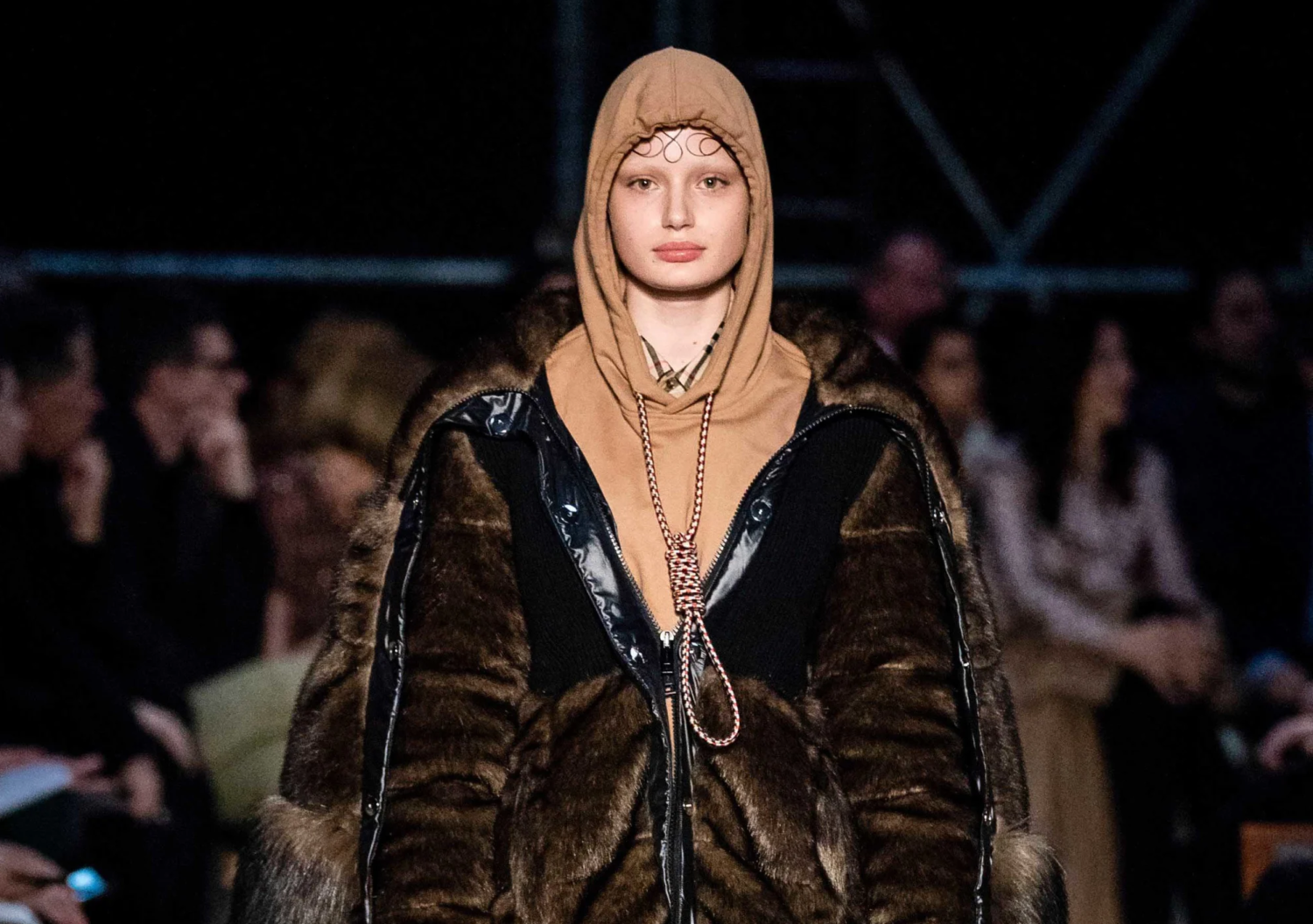
Riccardo Tisci’s “suicide” hoodie for Burberry. Photo: REX/Shutterstock
A New Day, a New Story
Then, in October 2013, it was announced that Angela Ahrendts would leave Burberry to become head of retail and online stores for Apple. Bailey would take over as chief executive in addition to chief creative officer. Together they had had an extraordinary run: Revenues, which had stood at £428 million when Bailey joined in 2001 and £743 million when Ahrendts took over in 2006, would that year exceed £2.3 billion. Adjusted operating profit during the same period went to more than £460 million — a nearly sevenfold increase. Burberry was the equal of nearly any fashion brand in Paris or Milan — a status no other British company could claim.
But outside Burberry’s headquarters on Westminster’s Horseferry Road, concerns were raised immediately. An analyst in Paris said she was “astounded by the idea. … It’s too much for one man.” She was not alone.
Sales and profits began to wobble not long after Ahrendts’ departure. China and Hong Kong had been the focus of a huge push beginning in 2010 — but just as Bailey was taking over, political unrest in Hong Kong and uncertainty on the mainland caused China’s rich to start shopping in Europe and Japan, where Burberry was seriously underrepresented. Sales fell in the U.S. as well. Profits dropped by 10 percent. The stock price slid by nearly 40 percent. Major investors were asking for Bailey’s head. It was not the kind of thing a story could fix.
In July 2016, a little more than two years after Bailey assumed the CEO role, the company announced that he would relinquish it to Marco Gobbetti, chief executive of the French luxury brand Céline. Gobbetti was a known quantity in the fashion trade, a veteran of Givenchy, Moschino and Bottega Veneta. Burberry announced Bailey’s departure not long after Gobbetti took over. His replacement: Riccardo Tisci, who had earlier worked side by side with Gobbetti to revive Givenchy.
Tisci is by all accounts a brilliant designer. And though his background is southern Italian, he has some British bona fides. In the 1990s he studied by day at Central Saint Martins, London’s leading fashion school, and went clubbing by night, rubbing shoulders with the likes of Kate Moss and Vivienne Westwood. Yet his sensibilities are distinctly Continental — dark, gothic, sensual, edgy. When his appointment was announced, British Vogue reported, “shockwaves reverberated through the industry.” Tisci’s response: “It’s a new dawn, a new day, a new story both for me and for Burberry.”
“Suicide is not fashion,” the model posted. “Riccardo Tisci and everyone at Burberry, it is beyond me how you could let a look resembling a noose out on the runway.”
Bailey’s last show — “the final chapter in nearly two decades of compelling storytelling,” as The Guardian’s Cartner-Morley put it — was a rainbow-hued tribute to gay youth. But as Bailey moved toward the exit, it became clear that Tisci did indeed see the brand quite differently.
The key moment came early on, when Liz Kennedy, a Burberry model, posted photos on Instagram of another model on Burberry’s runway wearing a hoodie with the drawstring tied quite conspicuously in a noose. Alongside the photos she wrote, “Suicide is not fashion. It is not glamorous nor edgy, and since this show is dedicated to the youth expressing their voice, here I go. Riccardo Tisci and everyone at Burberry, it is beyond me how you could let a look resembling a noose hanging from a neck out on the runway.”
In the ensuing blowback, Tisci professed to be “so deeply sorry” and claimed, somewhat bizarrely, that the design was actually “inspired by a nautical theme.” Gobbetti issued a similar apology. But it did not go unnoted that Burberry was the third luxury fashion brand to evoke a racist meme in as many months. Weeks earlier, Gucci had come out with an $890 black turtleneck designed to roll up around the face, with a bizarre cutout for the mouth edged in what could only be taken for enormous red lips. In December, Prada had been caught decorating a lower Manhattan store window with $550 black monkey trinkets that had bulging eyes and big red lips. Gucci apologized “deeply” and professed diversity to be “a fundamental value.” Prada claimed to “abhor all forms of racism” and vowed to form an advisory council “to guide our efforts on diversity.”
Seriously? “This shit is for attention,” tweeted Dani Kwateng-Clark, an editor at Vice Media. “There’s no fathomable way that fashion pulls from art and culture, yet is completely oblivious to triggering symbols.” A year later, these same brands would be banging the Black Lives Matter drum.
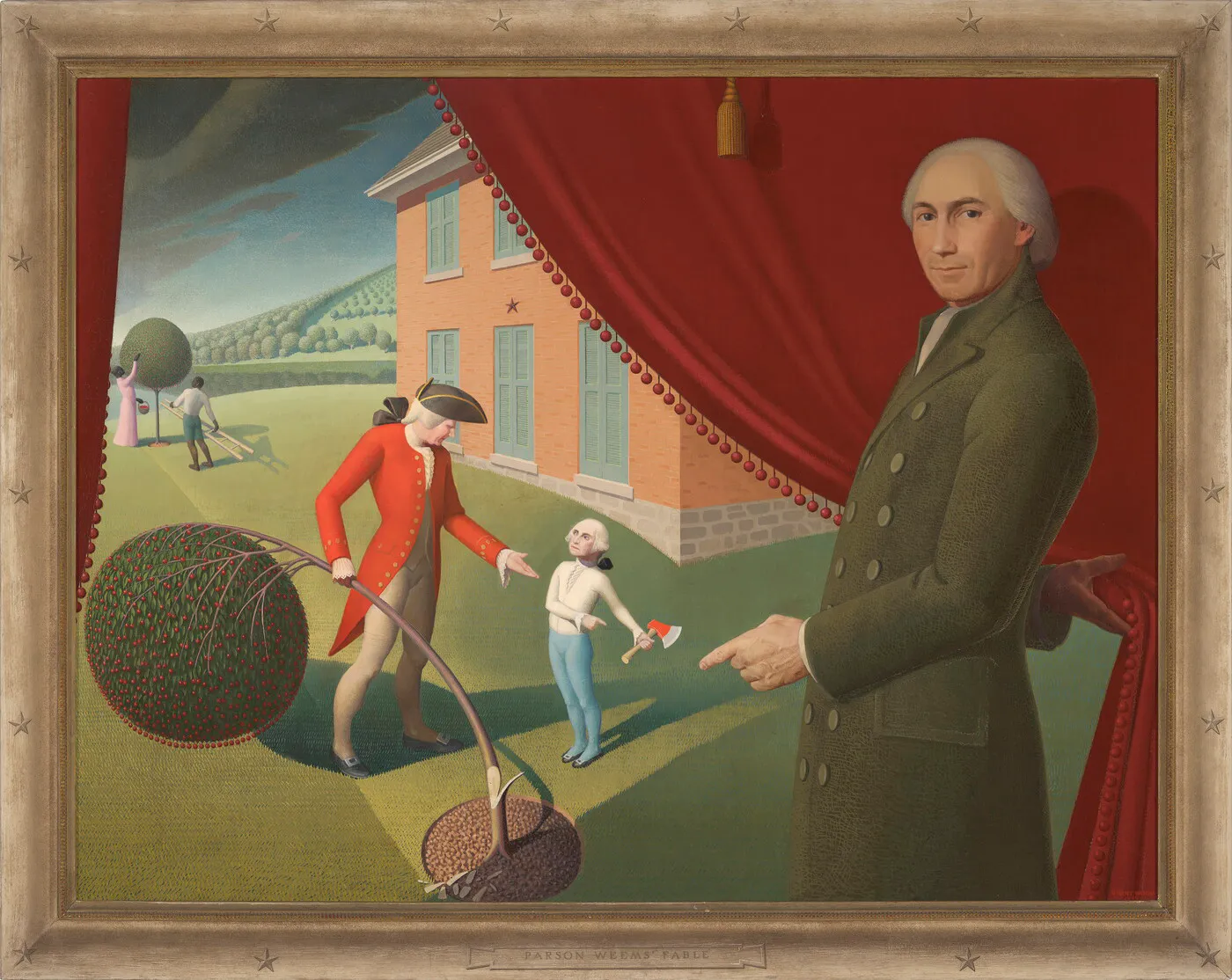
Is Americans’ reputation for honesty built on a falsehood? Grant Wood, “Parson Weems’ Fable,” oil on canvas, 1939. Amon Carter Museum of American Art, Fort Worth, Texas

 January 24, 2022
January 24, 2022
